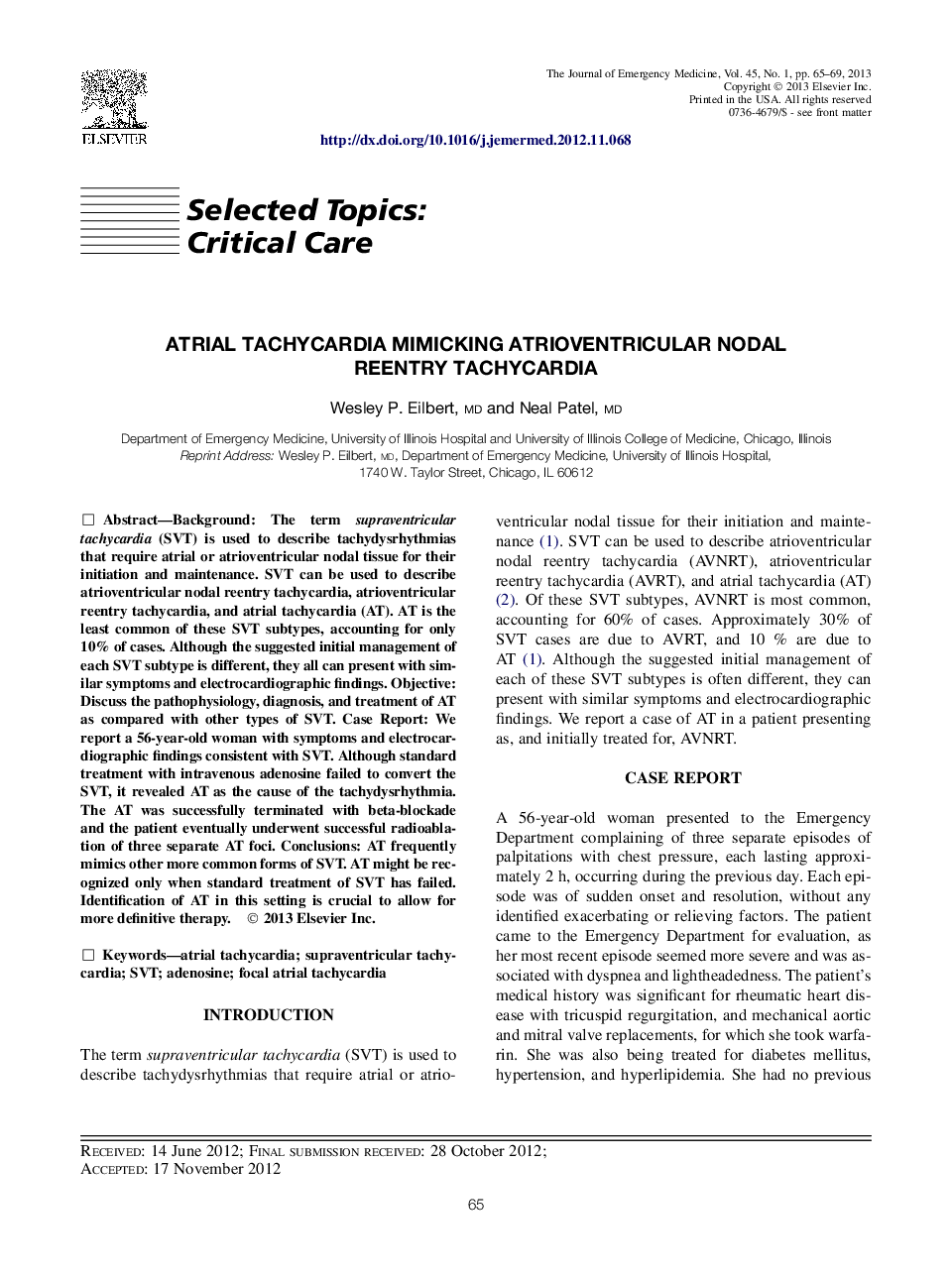| Article ID | Journal | Published Year | Pages | File Type |
|---|---|---|---|---|
| 3248102 | The Journal of Emergency Medicine | 2013 | 5 Pages |
BackgroundThe term supraventricular tachycardia (SVT) is used to describe tachydysrhythmias that require atrial or atrioventricular nodal tissue for their initiation and maintenance. SVT can be used to describe atrioventricular nodal reentry tachycardia, atrioventricular reentry tachycardia, and atrial tachycardia (AT). AT is the least common of these SVT subtypes, accounting for only 10% of cases. Although the suggested initial management of each SVT subtype is different, they all can present with similar symptoms and electrocardiographic findings.ObjectiveDiscuss the pathophysiology, diagnosis, and treatment of AT as compared with other types of SVT.Case ReportWe report a 56-year-old woman with symptoms and electrocardiographic findings consistent with SVT. Although standard treatment with intravenous adenosine failed to convert the SVT, it revealed AT as the cause of the tachydysrhythmia. The AT was successfully terminated with beta-blockade and the patient eventually underwent successful radioablation of three separate AT foci.ConclusionsAT frequently mimics other more common forms of SVT. AT might be recognized only when standard treatment of SVT has failed. Identification of AT in this setting is crucial to allow for more definitive therapy.
